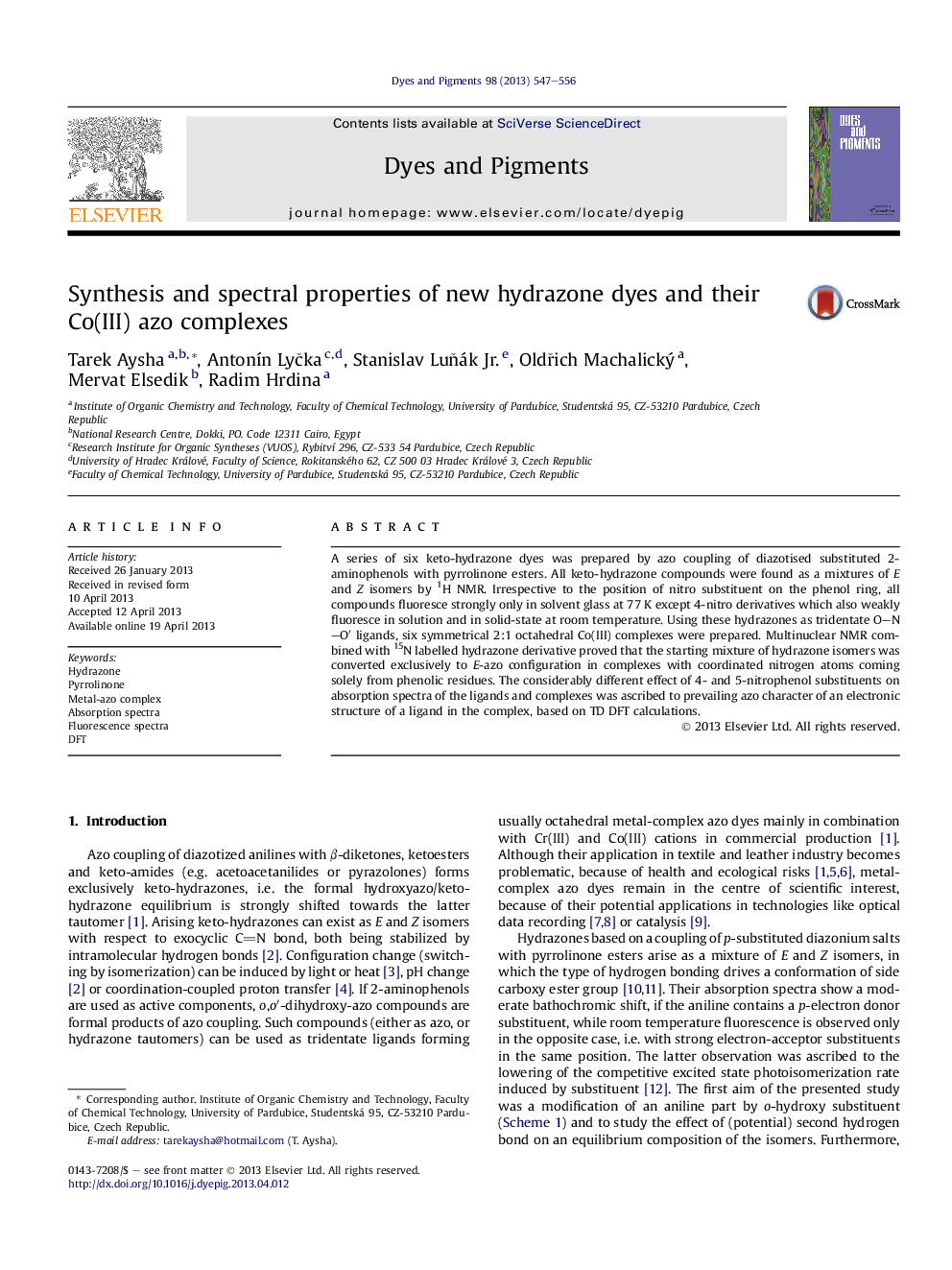| Article ID | Journal | Published Year | Pages | File Type |
|---|---|---|---|---|
| 176462 | Dyes and Pigments | 2013 | 10 Pages |
•Six new o-hydroxy substituted hydrazones based on pyrrolinone esters were prepared as a mixture of E and Z isomers.•Their absorption and fluorescence spectra were studied experimentally and theoretically by TD DFT.•Six new 2:1 symmetrical Co(III) complexes were prepared using these hydrazones as tridentate ligands.•The starting mixture of hydrazone isomers was converted solely to E-azo configuration in complexes by NMR spectroscopy.•Different effect of nitro group position in ligands and complexes on the absorption spectra was discussed.
A series of six keto-hydrazone dyes was prepared by azo coupling of diazotised substituted 2-aminophenols with pyrrolinone esters. All keto-hydrazone compounds were found as a mixtures of E and Z isomers by 1H NMR. Irrespective to the position of nitro substituent on the phenol ring, all compounds fluoresce strongly only in solvent glass at 77 K except 4-nitro derivatives which also weakly fluoresce in solution and in solid-state at room temperature. Using these hydrazones as tridentate O–N–O′ ligands, six symmetrical 2:1 octahedral Co(III) complexes were prepared. Multinuclear NMR combined with 15N labelled hydrazone derivative proved that the starting mixture of hydrazone isomers was converted exclusively to E-azo configuration in complexes with coordinated nitrogen atoms coming solely from phenolic residues. The considerably different effect of 4- and 5-nitrophenol substituents on absorption spectra of the ligands and complexes was ascribed to prevailing azo character of an electronic structure of a ligand in the complex, based on TD DFT calculations.
